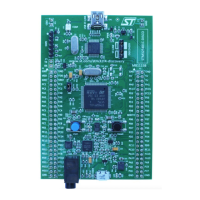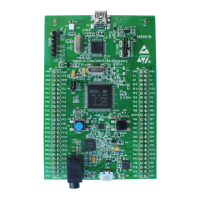Controller area network (bxCAN) RM0402
922/1163 RM0402 Rev 6
28 Controller area network (bxCAN)
28.1 Introduction
The Basic Extended CAN peripheral, named bxCAN, interfaces the CAN network. It
supports the CAN protocols version 2.0A and B. It has been designed to manage a high
number of incoming messages efficiently with a minimum CPU load. It also meets the
priority requirements for transmit messages.
For safety-critical applications, the CAN controller provides all hardware functions for
supporting the CAN Time Triggered Communication option.
28.2 bxCAN main features
• Supports CAN protocol version 2.0 A, B Active
• Bit rates up to 1 Mbit/s
• Supports the Time Triggered Communication option
Transmission
• Three transmit mailboxes
• Configurable transmit priority
• Time Stamp on SOF transmission
Reception
• Two receive FIFOs with three stages
• Scalable filter banks:
– 28 filter banks shared between CAN1 and CAN2 for dual CAN
• Identifier list feature
• Configurable FIFO overrun
• Time Stamp on SOF reception
Time-triggered communication option
• Disable automatic retransmission mode
• 16-bit free running timer
• Time Stamp sent in last two data bytes
Management
• Maskable interrupts
• Software-efficient mailbox mapping at a unique address space
Dual CAN peripheral configuration
• CAN1: Master bxCAN for managing the communication between a Slave bxCAN and
the 512-byte SRAM memory
• CAN2: Slave bxCAN, with no direct access to the SRAM memory.
• The two bxCAN cells share the 512-byte SRAM memory (see Figure 319: Dual-CAN
block diagram)

